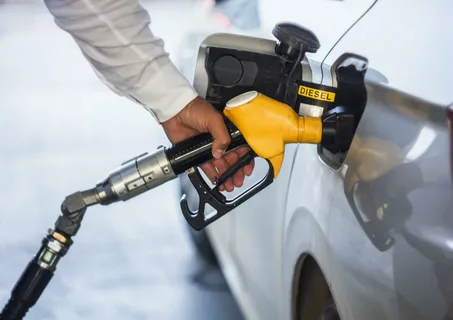Driving is a significant part of daily life, and ensuring your vehicle operates efficiently is paramount. However, mistakes happen, and one of the most common errors is putting diesel in a petrol car. This mix-up can cause a range of issues, from minor inconvenience to significant damage. In this guide, we’ll explore the symptoms, risks, and quick fixes for this problem to help UK drivers stay informed and prepared.
What Happens When Diesel is Put in a Petrol Car?
When diesel is accidentally filled into a petrol car, the consequences are immediate but vary in severity. Petrol engines rely on a spark-ignition system, while diesel fuel is designed for compression-ignition engines. Diesel fuel does not vaporize in the same way as petrol, which disrupts the combustion process.
Here’s what typically happens:
- Engine misfires or stalls due to improper combustion.
- The fuel system gets clogged, affecting performance.
- Long-term use could cause damage to fuel injectors, filters, and the catalytic converter.
Symptoms of Diesel in a Petrol Car
Spotting the signs early can save you from costly repairs. Look out for these symptoms if you suspect added to diesel in petrol car:
- Unusual Engine Behaviour
- The engine may struggle to start, or it might not start at all.
- Irregular idling or stalling during driving.
- Excessive Smoke
- Diesel produces thicker, darker exhaust smoke when combusted in a petrol engine.
- Reduced Performance
- Noticeable power loss, sluggish acceleration, or hesitation when pressing the throttle.
- Strong Odour
- A distinct diesel smell may emanate from the exhaust or fuel tank.
- Dashboard Warning Lights
- The check engine light or other warning indicators might illuminate.
Risks of Driving a Petrol Car with Diesel
Continuing to drive after misfuelling can escalate the damage. Below are the potential risks involved:
1. Fuel System Damage
Diesel is thicker than petrol, and its lubrication properties can block or damage the fuel pump, filters, and injectors.
2. Catalytic Converter Issues
Unburned diesel can coat the catalytic converter, reducing its efficiency and potentially leading to replacement.
3. Engine Seizure
Prolonged use of diesel in a petrol car can cause the engine to seize due to incomplete combustion or residue build-up.
What to Do If You Put Diesel in a Petrol Car
If you’ve realized the mistake, act swiftly to minimize damage. Follow these steps:
1. Do Not Start the Engine
Starting the car circulates diesel through the fuel system, exacerbating the problem. Avoid turning on the ignition.
2. Safely Move the Vehicle
If possible, push the vehicle to a safe spot or call for roadside assistance.
3. Call a Professional Fuel Drain Service
Specialized services can drain the contaminated fuel and flush the system efficiently. Ensure they are licensed and experienced.
4. Replace Necessary Components
After draining, check if parts like the fuel pump, injectors, or filters need replacing.
How to Prevent Misfuelling in the Future
Prevention is better than cure. Here are some tips to avoid such costly mistakes:
- Label Your Fuel Cap: Add a reminder sticker near the fuel cap specifying “Petrol Only.”
- Double-Check at the Pump: Always verify the fuel type before filling.
- Use a Fuel Filler Cap Device: Anti-misfuelling devices restrict incorrect nozzles from fitting into the tank.
When to Seek Professional Help
If you’re unsure about the extent of contamination, consult a mechanic immediately. They can assess the damage and suggest the best course of action. Delaying action could lead to more expensive repairs down the line.
Conclusion
Misfuelling a petrol car with diesel can be a stressful experience, but understanding the symptoms, risks, and solutions can save you time and money. Always act quickly to prevent extensive damage, and consider taking preventative measures to avoid misfuelling in the future.
Discover more helpful articles here.



